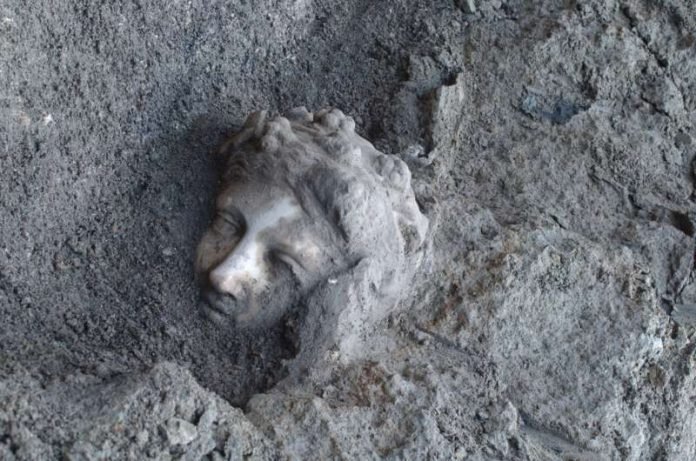
In a groundbreaking archaeological find, researchers from the University of Tokyo, in collaboration with local archaeologists, have unearthed what might be the home of Gaius Julius Caesar Augustus, the first Roman emperor, near the town of Nola in Italy’s Campania region.
This discovery challenges previous notions about the areas affected by Mount Vesuvius, revealing that its eruptions impacted more than just the southern regions like Pompeii and Herculaneum.
The site, located in the northern valley of Somma Vesuviana, was initially discovered accidentally by a farmer in 1929.
At that time, the excavation revealed a part of a luxurious Roman villa beneath a later structure from the 2nd century.
Financial constraints halted further exploration until 2002, when the University of Tokyo undertook a more thorough investigation of the villa.
This long-term project has brought to light numerous Roman artifacts, elegant marble statues, and previously unknown sections of the villa, adorned with wall paintings, stucco reliefs, and mosaics.
The researchers used radiocarbon dating and collaborated with volcanologists to analyze the layers of volcanic material.
Their findings confirm that parts of the villa were buried during Vesuvius’s infamous AD 79 eruption.
This indicates significant destruction in the northern regions near the volcano, which were previously thought to be less affected.
The discovery of this villa aligns with historical accounts by Roman writers like Tacitus, Suetonius, and Dio Cassius, suggesting it might have been Augustus’s residence.
This hypothesis is supported by the villa’s grandeur and the high-quality artifacts found at the site, which signify the dwelling of someone extremely prominent in Roman society.
Kohei Sugiyama, an archaeologist at the Institute for Advanced Global Studies at the University of Tokyo, emphasized the broader implications of their findings.
He noted that the research not only connects physical evidence to historical figures known mainly through texts but also sheds light on the local economy and society during that period, which appears to have been more significant than previously understood.
This excavation also illustrates the resilience of the local population, who rebuilt and continued to thrive after the disaster, in contrast to Pompeii, where the city was left abandoned for centuries under thick volcanic ash.
The challenges of such an archaeological project are immense, requiring heavy machinery to dig up to 15 meters deep and move large boulders, alongside the continual need for funding.
Yet, the potential to learn from ancient recovery efforts following disasters could provide valuable insights for modern disaster preparedness and recovery strategies.
This ongoing excavation not only enriches our understanding of Roman history but also highlights the advanced and prosperous civilization that existed in this part of Italy before being hidden beneath volcanic ash for millennia.



